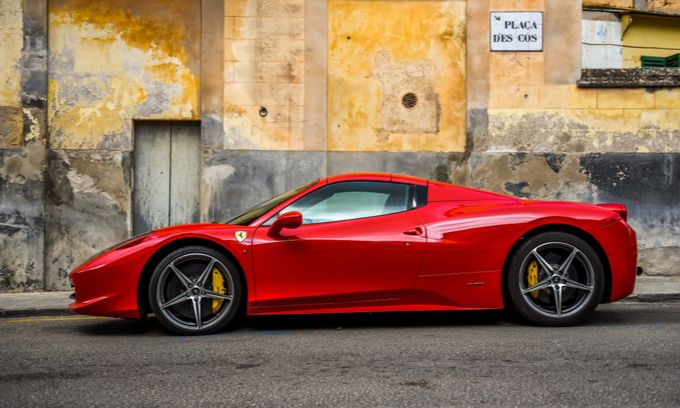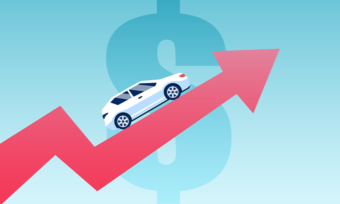KEY POINTS
- There are several insurance providers that offer car insurance for imported cars.
- Imported car insurance is generally more expensive than standard car insurance.
- If you wish to import a car into Australia, the Federal Government requires you to apply for approval in order to do so.
The good news, aside from the joy of seeing your new wheels in the driveaway, is that many insurers won’t have too much of a problem providing imported car insurance. There are even some providers who specialise in classic and imported cars. However, depending on your circumstances you may need to pay more than the average motorist for your car insurance premiums.
What is imported car insurance?
It’s important to note that imported car insurance is not the same thing as standard car insurance for a vehicle that has been made abroad and brought into Australia at some point. The closure of Australia’s last car manufacturing plant in 2017 means that virtually all new cars purchased in Australia since then were manufactured overseas before being imported and sold here. These cars, however, must meet Australian Road Vehicle Standards laws in order to be approved for sale in Australia.
But the term ‘imported car’ in an insurance context generally refers to a car that has been purchased from an overseas seller and shipped into Australia. Depending on the particular vehicle, it is possible that some standard car insurers may offer cover for these types of cars (though higher premiums or other costs may apply). Some specialist insurers may also offer policies designed for imported cars.
Who offers imported car insurance?
The Insurance Council of Australia’s Find An Insurer service lists insurers who provide cover for imported vehicles. These are:
- Assetinsure
- Enthusiast Motor Insurance
- Lumley Special Vehicles
- MB Insurance Group
- NRMA (NSW, ACT, TAS, QLD, SA, WA & NT)
- RAA Insurance (SA)
- RACV (Vic)
- Ryno Insurance
- Shannons
If you’re considering taking out a policy with one of these insurance providers (or any other), it can be a good idea to read the details and fine print first—such as the Product Disclosure Statement (PDS), Target Market Determination (TMD), and any other important documents.
How much does it cost to insure an imported car?
Your premium for imported car insurance may vary based on the level of cover you require and the specific vehicle you’re looking to insure. That said, it’s likely that you may have to pay more to insure an imported vehicle than you would a domestic one—especially if the car has been modified.
Some insurance providers reduce premiums when you make an effort to reduce the chance of your car being stolen. Providers also offer certain deals & offers when taking out new car insurance policies. It’s a good idea to read the T&Cs, PDS and TMD before signing up for a new policy.
If you would like to know more about what’s on the market, you may find it helpful to read our breakdown about the different types of car insurance available to Australians. Canstar also rates comprehensive car insurance providers, awarding general providers (including some who might offer imported car insurance) with an Outstanding Value Award if they come out on top in its Car Insurance Star Ratings and Awards. You can also compare car insurance providers on Canstar’s website or via the Canstar app.
What should I consider when buying an imported car?
When importing a vehicle into Australia, the Federal Government requires you to obtain approval to import the vehicle. You will also typically need to pay shipping costs, as well as fees and taxes like customs duty, GST and potentially the luxury car tax—depending on the particular vehicle you’re buying and how much it’s worth.
To help cover your costs, you might like to consider a car loan or a personal loan. Keep in mind that not all of these loans will necessarily be suitable for your needs, and that the products you can access may also depend on factors such as your credit score and borrowing capacity. You can check your credit score for free with Canstar or via the Canstar App.
Do imported cars cost more to insure?
Imported prestige cars can cost more to insure than cars that are made for the domestic Australian car market. Insurance providers may partially base their premiums on how likely a car is to be involved in an incident and how much it will likely cost to repair. Fast imported cars tend to be seen as more likely to be involved in an accident and more expensive to repair if they have been significantly damaged or written off.
Four reasons import car insurance can be expensive
1. Modifications
A car manufactured in an overseas market will likely have been made to different safety and road standards than a car made for the Australian market. The Federal Government’s Department of Infrastructure, Transport, Regional Development, Communications and the Arts notes that imported vehicles may need to undergo a range of modifications in order to make them legal to drive on our roads. This in turn may drive up the cost of your insurance premiums. While most modifications usually aren’t a deal-breaker (as long as you inform your insurer about them), your provider may charge you more to insure the vehicle, depending on what’s been modified.
2. The need for speed
If your imported vehicle could reasonably be referred to as a ‘sports car’, you may end up paying more to insure it. Cars made for speed, like Ferraris and Lamborghinis (often also referred to by insurance providers as ‘prestige cars’) are viewed as relatively risky to insure, due to the perceived higher chances of being involved in a crash. This means that providers may take one of three approaches when it comes to insuring prestige cars:
- They may refuse to insure them
- They may insure them, but charge you a considerable amount more to do so
- They may specialise in insuring vintage and prestige vehicles, and a more expensive premium will generally be their default offering as a result.
3. Potentially expensive repairs
Australia has a love affair with Japanese cars. Toyota and Mazda models regularly dominate the best selling list, and are often associated with being relatively inexpensive to repair when they break down. The same can’t always be said for imported cars—particularly those that aren’t ordinarily sold in Australia. Even among pricier vehicles, some prove dearer than others to repair and service due to parts being more difficult to source and specialist knowledge being required to service them.
4. Less competition
With fewer providers who can insure imported cars in Australia, you may find that the policy you are offered is more restrictive. With less competition in the market, pricing may be higher. You might also find the best option for you is to choose a policy that offers some extra features or inclusions, like an agreed value for your vehicle or provide you with your own choice of repairer. These could come with a higher price tag when it’s time to pay your insurance premiums.
What affects the cost of repairing imported cars?
Some of the factors that can affect how much an imported (or prestige) car costs to repair over the long term are:
- The brand’s routine maintenance schedule
- The cost of parts (which will generally be higher for luxury brands like BMW and Mercedes when compared to affordable brands like Toyota and Mazda) and repairer charges
- The exclusivity of the brand and its models (e.g. how easy it is to acquire parts and how simple it is to find a repairer for your car).
What are some other car insurance options?
Car insurance for imported cars most likely won’t be cheap. Your premiums and claim excess may be higher, and you may end up with greater out-of-pocket costs in the event of an accident. However, if you’ve invested in purchasing and importing a car, this might be a cost you’re willing to take on. If you’re looking for a potentially more affordable option though, you may want to consider buying a similar vehicle made for the Australian domestic market, which will most likely be cheaper to purchase, operate and insure.
Is it cheaper to import a car than buy one in Australia?
A cheaper base price and favourable exchange rate may make it seem like an overseas car is cheaper to purchase than an Australian market equivalent. However, this doesn’t take into account importation costs, fees, taxes and compliance costs which ensure that the vehicle meets Australia’s Road Vehicle Standards laws. While those looking to save money on the cost of buying a car might not receive value from importing, those doing it for other non-cost related reasons may still wish to do so—even with the additional costs.
Are imported Japanese cars more expensive to insure?
It’s likely that if you purchase a Japanese car and organise to ship it to Australia that it may be more expensive to insure than a car from a Japanese brand purchased domestically. This is because buying and importing a Japanese car is a different process to purchasing a popular model that is being sold—either new or second-hand—locally in the Australian market. Carsguide has a dedicated article about importing cars from Japan to Australia. Keep in mind that at a minimum, all vehicles travelling on Australian roads are required to be covered by Compulsory Third Party (CTP) or Greenslip insurance, separate to any specialised car insurance or comprehensive insurance policy.
Additional reporting by Nick Whiting.
Cover image source: BorisPhotographer/Shutterstock.com








